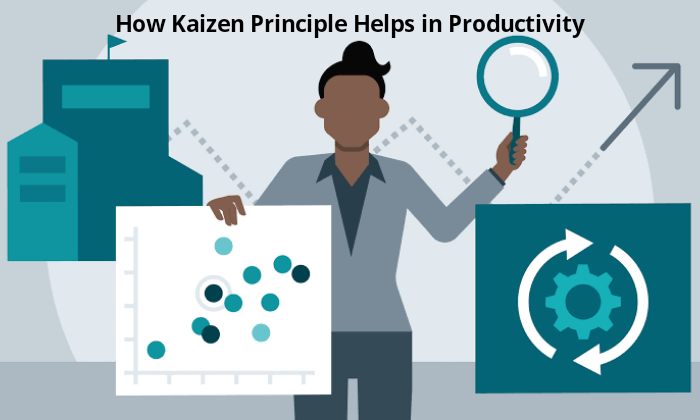Kaizen has its origin in Japan. The word refers to continuous improvement or change for the better. It is applicable anywhere and everywhere at the workplace, ensuring that there is an enhancement in productivity.
Therefore, it is akin to a philosophy, which all workers practice daily. As a result, every individual is involved in increasing efficiency, standardizing processes, and eliminating wastes. However, Kaizen receives a boost if the business combines it with Six Sigma. The latter focuses on creating a final product of high quality. It strives to remove everything that may be responsible for creating defects.
Now, if you were keen to make a mark in the IT industry, you would do well to know both Kaizen and Six Sigma. You will gain experience of the former during your working life. As for the latter, you will need to apply for certification in the Lean Six Sigma Black Belt course will help you comprehend everything about both concepts, Six Sigma and Lean. However, ensure that you reach out to a reputed establishment offering training via well-qualified professionals.
Kaizen and Continuous Improvement
Kaizen has a beautiful effect on enhancing effectiveness, productivity, safety, and reduction in wastage. In what areas does it bring about such improvements?
Commitment
As the implementer of Kaizen, you create a pathway for open and frank communication. Members of your team may come forward with suggestions, criticisms, etc., without fear. At the same time, you might outline each member’s role and emphasize how significant it is for the completion of the project. Naturally, when team members feel valued, they experience marvelous job satisfaction. Therefore, they display a more significant commitment to the achievement of diverse tasks.
Team Work
No team member works for himself/herself, but the group. It will happen when you adopt a team-based approach, where everyone is encouraged to participate. Admittedly, you portray yourself as a learner too. Additionally, it would be good to reward progressive ideas.
Retention of Employees
When employees engage in individual/group problem solving, they develop self-confidence. There is the belief that they are contributing significantly towards the fulfillment of organizational objectives. Furthermore, there is a healthy and strong bonding between the team members. It follows, therefore, that employees will not wish to quit this particular job. The company benefits by retaining employees, and not having to cope with a quick turnover of workers.
Competitiveness
A motivated workforce strives to stay one step ahead of the organization’s competitors. It exhibits excellent concern about offering high-quality products/services, such that customers remain satisfied always. Employees also comprehend the importance of cost-effectiveness and try to do their best to reduce the costs of operations.
Kaizen Eliminates Waste
Sometimes, businesses engage in overproduction or even non-essential activities. Then again, there may be a wastage of time too. The Kaizen philosophy believes that if there were a focus on higher efficaciousness and quality of products/services, an organization would be able to save plenty of money. In turn, it would be able to convert potential losses into real profits.
Wastage can take several surprising forms.
Time
Examples include waiting for latecomers at time-restricted meetings, hunting for relevant documents randomly distributed across the system, etc.
Movement
Examples include traveling from one building/place to another for conferences instead of organizing teleconferences, multitasking, etc.
Over-processing
Examples include overworking on a product/service to provide maximum customer satisfaction, having too many members (unnecessary people) at meetings, etc.
Defects
Examples include re-writing of documents or redoing of tasks since there was incomplete research involved beforehand.
Variations
Examples include sidelining of readymade templates in favor of preparing new documents every time, making individualized reports instead of clubbing diverse topics into one story.
The above are just a few examples of wastage. There is much more. However, if you are a leader, you could do your bit by maintaining a regular log of wastes. Similarly, get your team into the picture. A monthly meeting for figuring out areas of wastage should suffice. Let the team come up with ideas for improvement. In case the changes affect other departments/teams in the organization, you must inform them too.
The Six-Sigma Black Belt Certification Process
The best part of obtaining any type of certification in the IT arena is that you may attain online training for it. Additionally, you have the choice of going through the course at your own pace or using a guide. The former refers to self-paced learning. The latter refers to blended learning, wherein study materials, interactive sessions with experienced tutors, self-paced learning d personal mentoring – all come into play.
Eligibility
You will be a better candidate for the course if you are already working as a management professional, software professional, senior manager, or project manager. Then again, you could be a quality assurance engineer or a team leader.
Prerequisites
There are no rigid prerequisites. However, you must have undergone training in Six Sigma Black Belt from a reputed institute. Our trainer must have valid credentials. Alternatively, he/she could be a genuine trainer involved in corporate programs. Apart from this, it would be splendid if you display some real-world experience in this particular field.
Examination and Certification
The International Association for Six Sigma Certification (IASSC) is responsible for initiating the examination at the end of the training program. It provides a questionnaire comprising of 150 questions, all in the multiple-choice or true/false formats. You will have four hours to complete the closed book exam. You must score above 70% in the exam. Otherwise, the IASSC will deem you as a failed candidate.
Once you clear the exam, you will receive a certificate, which stays valid for three years. After that, you will have to renew your certification. In case you fail to get through the final test, you may attempt a second sitting. However, there must be a gap of two weeks between the first and second attempts. A third attempt is permissible, three months after the first attempt. After that, IASSC allows re-attempts once in three months.

